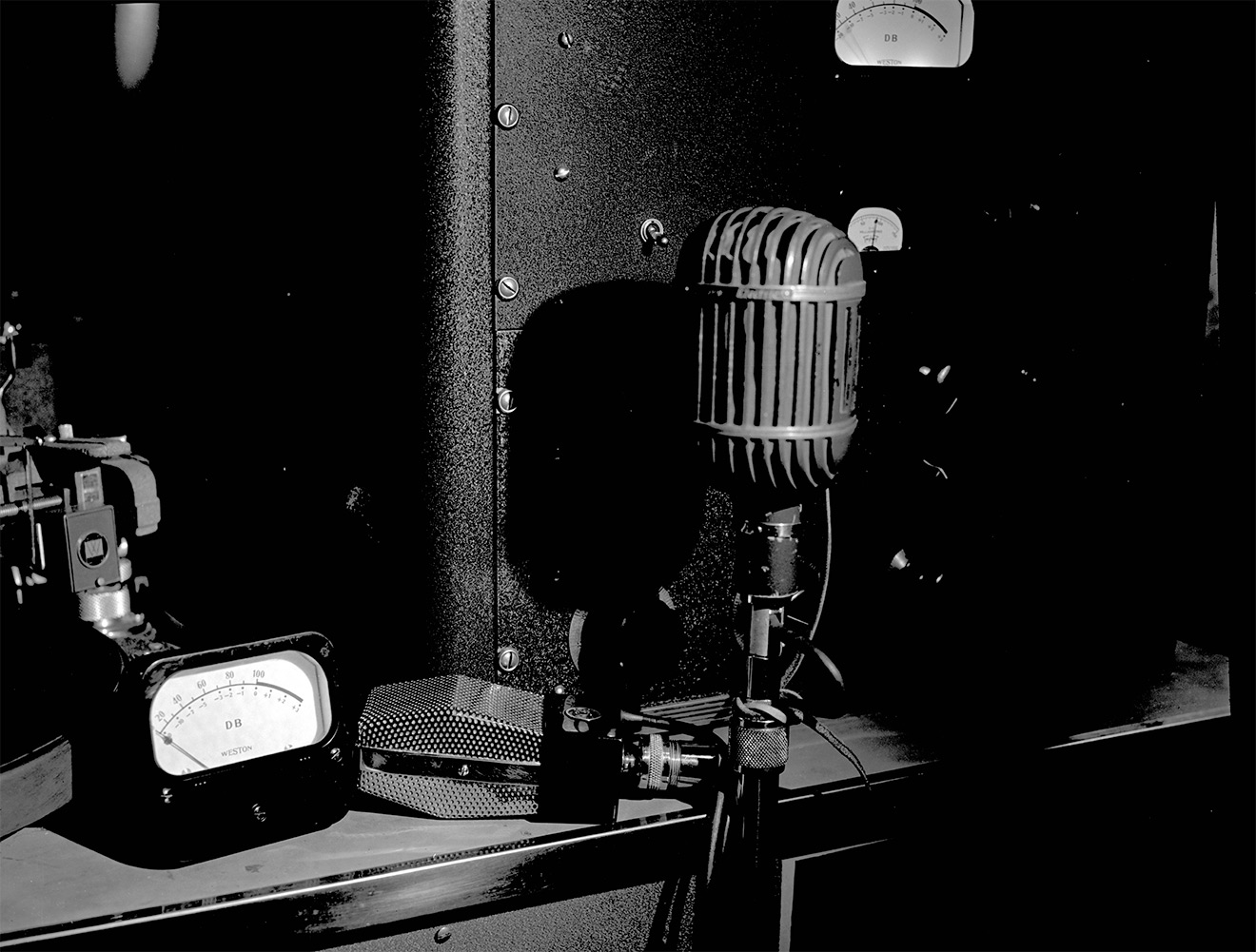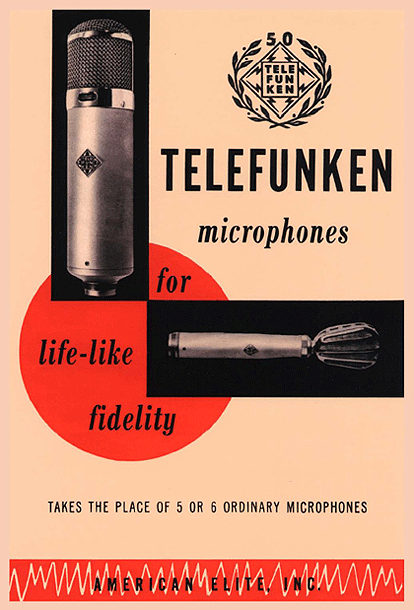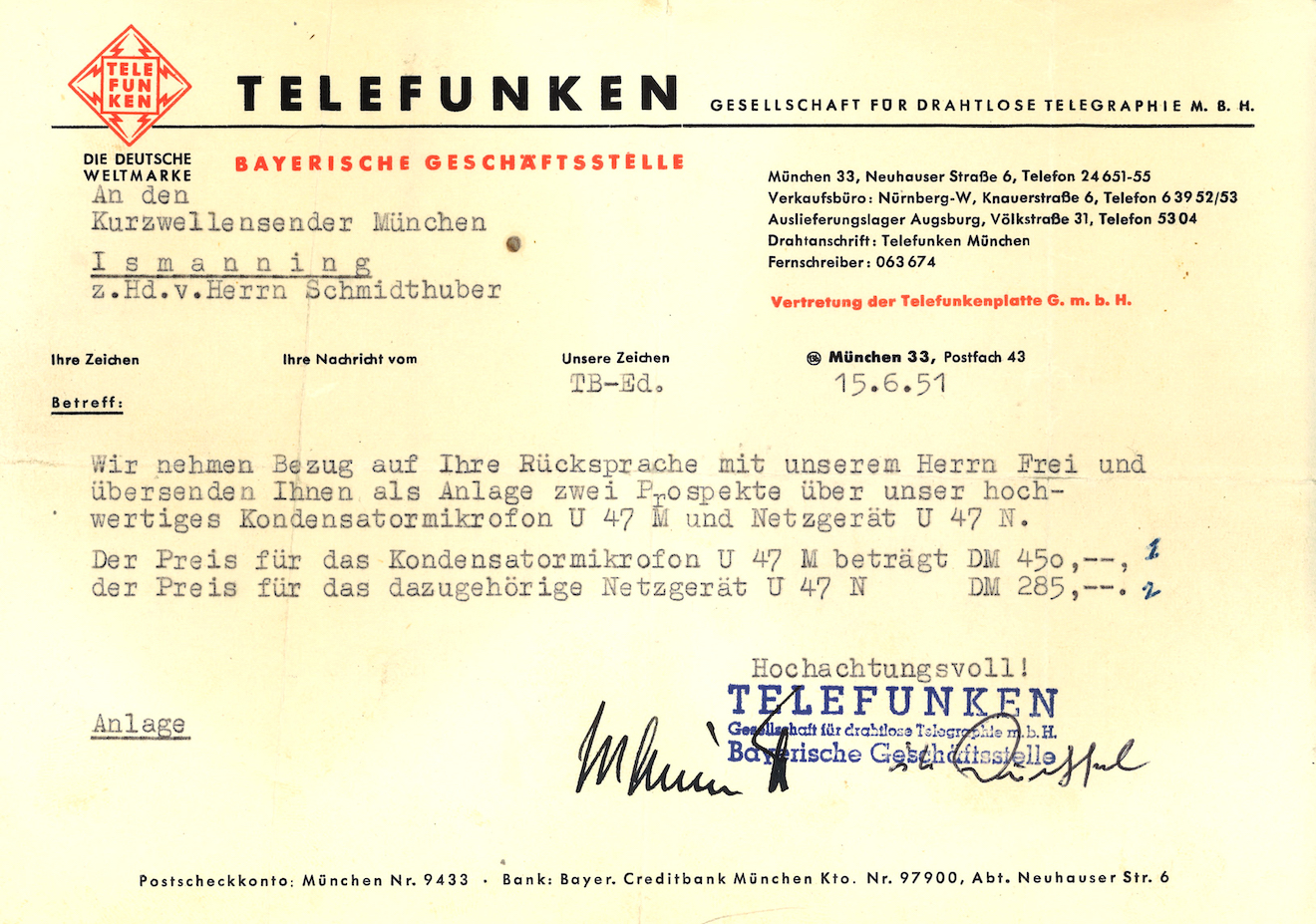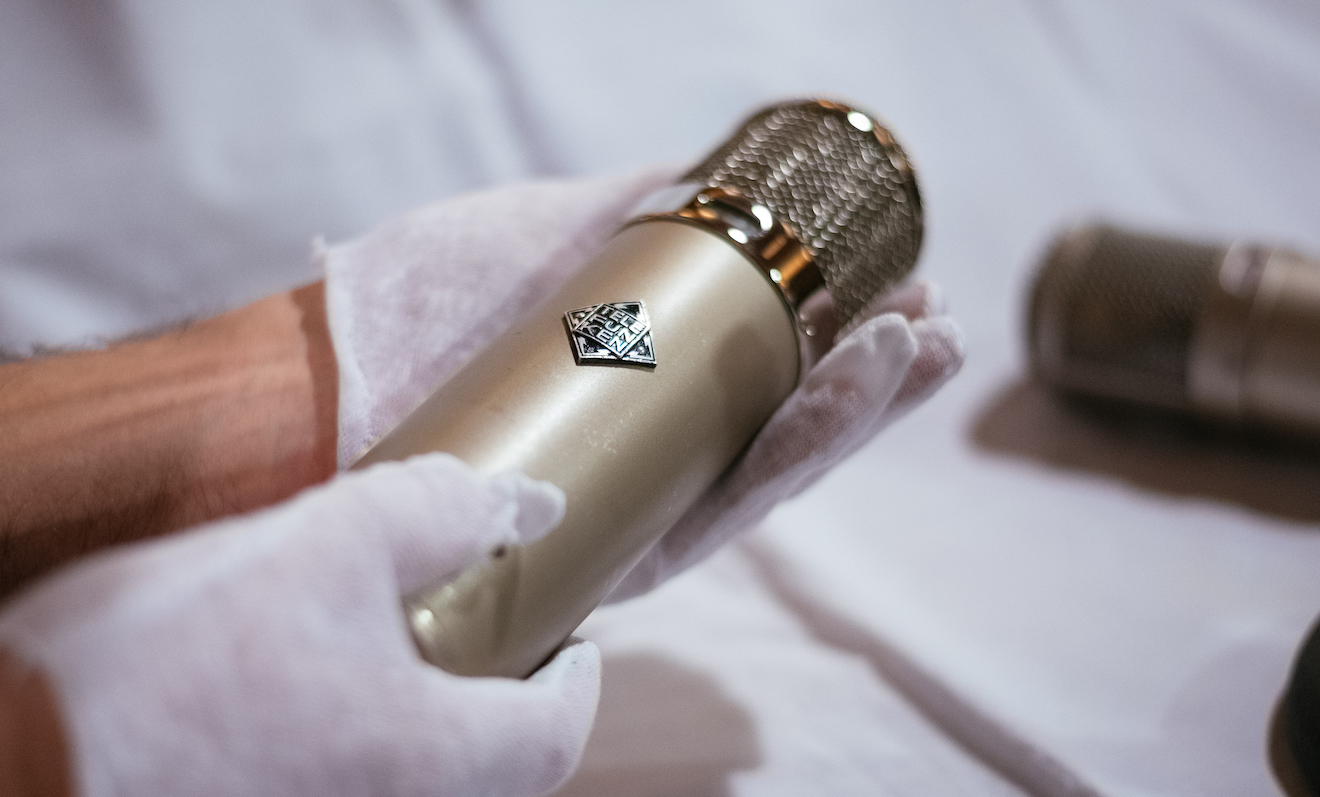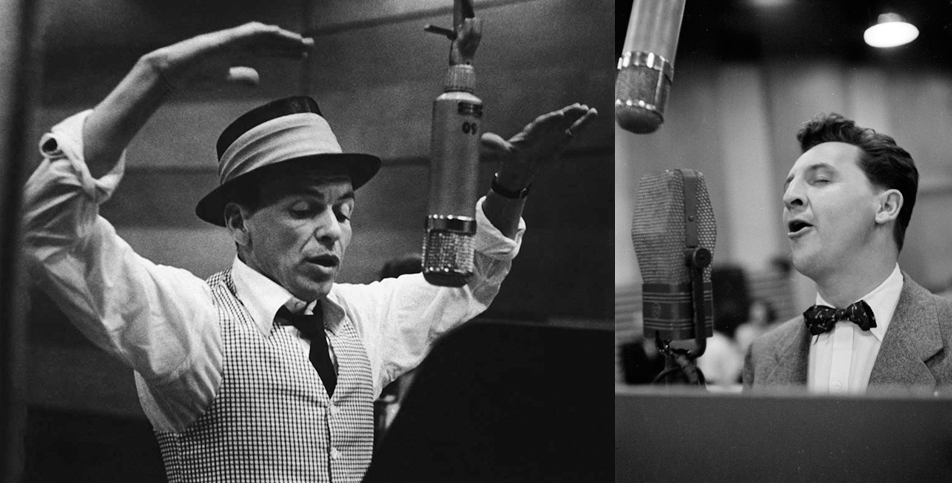| < Back | The Arrival of Tape | Early Professional Recordings | Next > |
| The Arrival of Tape < Back |
Early Pro Recordings Next > |
The American radio and recording industries were dominated by domestic equipment manufacturers throughout the 1940s. As a result, Rudy Van Gelder was using American microphones at the time. Over in Germany though, an audio equipment company named Neumann was perfecting a new type of condenser microphone that would soon change the recording industry forever.
The Neumann U47 first came off the production line in June 1948. Marketed by Telefunken internationally, its original price was $390 (about $3,500 in 2020) and much more expensive than the RCA ribbon microphones that were the industry standard at the time (Schwartau & Smith, 1980).
No later than 1951, Van Gelder first laid eyes on the U47 during a visit to Reeves Sound Studios in Manhattan (Zand, 2004). This was quite possibly one of only two U47’s in the country at the time (the other possibly belonging to Capitol Records), and once Van Gelder heard it, he had to have one.
So in June 1951 he reached out to a friend who worked for Armed Forces Radio near Munich to see if they could purchase one directly from Germany (Zand, 2004).
(Source: The Van Gelder Estate)
We’re not sure how long it took Van Gelder to acquire one of the microphones, but by January 1953 he was actively using the U47 for recording sessions (Wolff), and he would go on to use the mic regularly throughout the 1950s.
The U47 created a revolution in recording, and it was the second key piece of professional gear acquired by Van Gelder that would move him closer to his sonic vision. With sensitivity and detail unrivaled by the American mics that came before it, the U47 gave Rudy’s recordings a new, heightened sense of realism.
Soon, every professional studio had one, and studios owned by major labels like Capitol and Columbia were no exception.
| < Back | The Arrival of Tape | Early Professional Recordings | Next > |
| The Arrival of Tape < Back |
Early Pro Recordings Next > |
